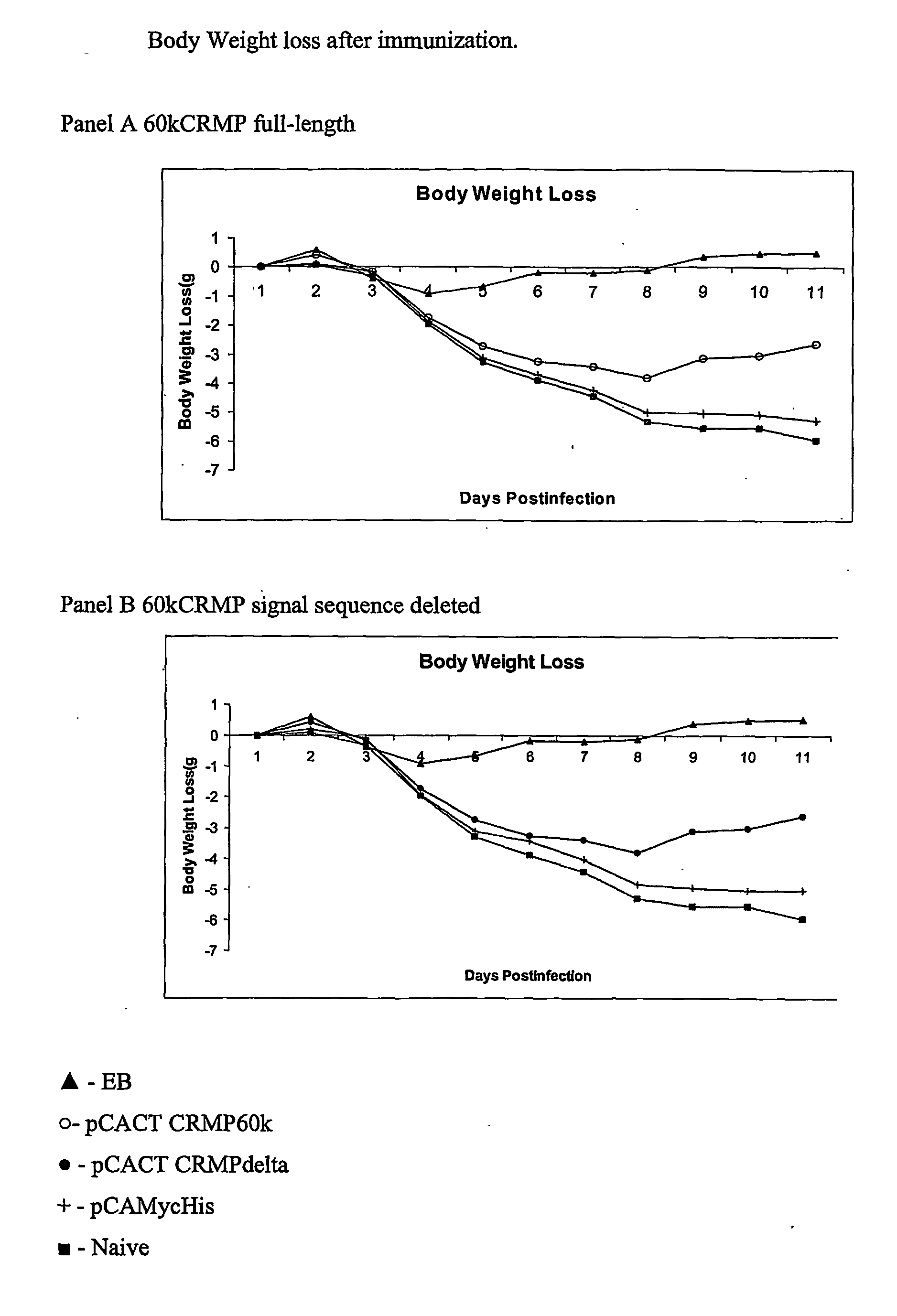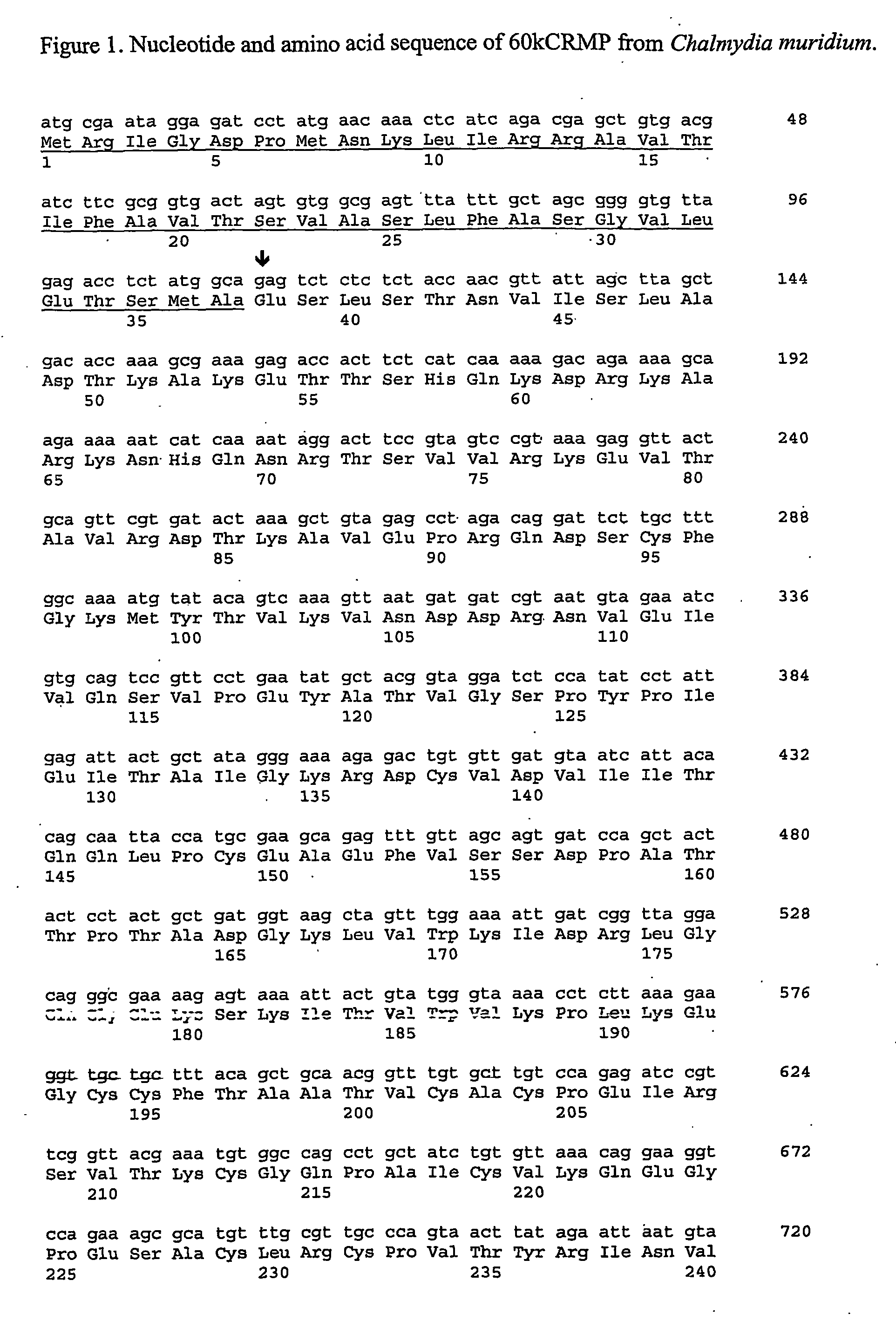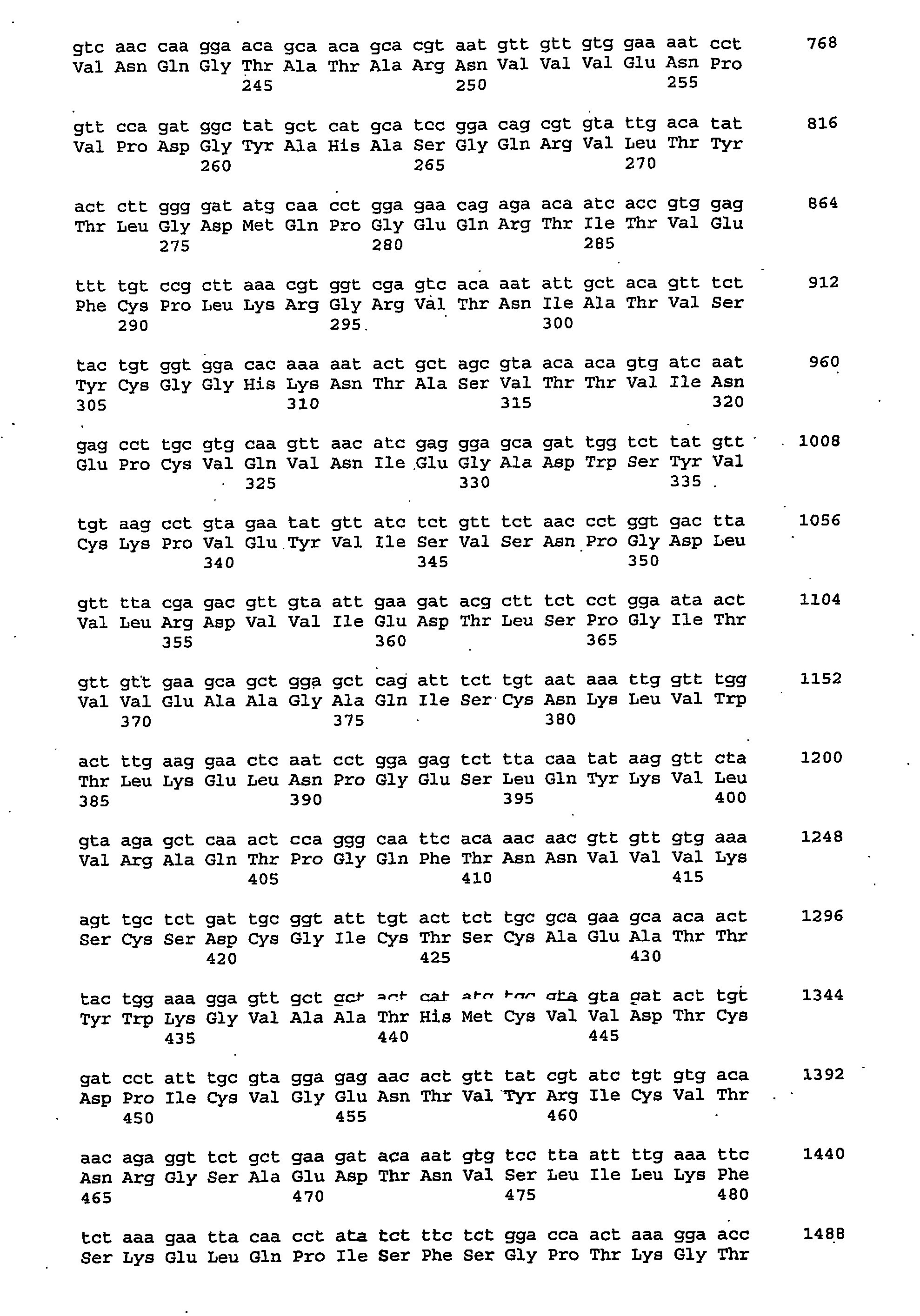Immunization Against Chlamydia Infection
a technology for chlamydia infection and immunization, applied in the field of immunology, can solve the problems of inability to effectively treat infections, and inability to meet the needs of patients,
- Summary
- Abstract
- Description
- Claims
- Application Information
AI Technical Summary
Benefits of technology
Problems solved by technology
Method used
Image
Examples
example 1
[0145]This Example illustrates the preparation of a plasmid vector for immunization.
[0146]The C. trachomatis mouse pneumonitis (MoPn) isolate was grown in HeLa 229 cells in Eagle MEM containing 10% fetal bovine serum and 2 mM L-glutamine. The MoPn EBs were harvested and purified by step gradient density centrifugation at 43,000 g for 60 min at 4° C. The purified EBs were washed twice with PBS, centifugated at 30,000 g for 30 min, resuspended in sucrose-phosphate-glutamic acid (SPG) buffer and frozen at −70° C. until used.
[0147]The nucleic acid molecule encoding 60kCRMP gene was cloned into eukaryotic expression plasmid pCAMycHis inframe with the Myc-His tags present in the vector. This vector was constructed from pcDNA3.1(−)Myc-His C (Invitrogen, San Diego) and plasmid VR1012 (Vical). The details of the construction are disclosed in the PCT publication WO 00 / 55326 published on Sep. 21, 2000. Briefly, plasmid pcDNA3.1(−)Myc-His C (Invitrogen) was restricted with Spe I and Bam HI to r...
example 2
[0151]This Example shows the results of immunizing studies using the nucleic acid vector.
[0152]In order to investigate whether the immune responses elicited by the nucleic acid immunization were functionally significant, in vivo protective efficacy was evaluated as described before (ref 20). Briefly, female Balb / c mice (4 to 5 weeks old) were purchased from Charles River Canada (St. Constant, Canada) mice were intramuscularly and intranasally immunized with plasmid DNA, prepared as described in Example 1, on three occasions, at 0, 2 and 4 weeks see FIG. 3. For each immunization, a total of 200 μg DNA in 200 μl was injected into the two quadriceps muscles (100 μg of DNA / injection site) using a 27-gauge needle. At the same time, 50 μg DNA in 50 μl was delivered onto the nostrils of mice with a micropipette. The droplet was subsequently inhaled by the mice.
[0153]Mice were challenged intranasally with 2×103 IFU of C. trachomatis MoPn EB 14 days after last immunization, as described. Bri...
example 3
[0157]This example illustrates the preparation of a nucleic acid vector for recombinant 60-kDa cysteine rich membrane protein (60kCRMP) expression in E. coli.
[0158]Procedures required for PCR amplification, DNA modifications by endo- and exonucleases for generating desired ends for cloning of DNA, ligation, and bacterial transformation are well known in the art. Standard molecular cloning techniques used there are well known in the art and are described by Sambrook, J., Fritsch, E. F. and Maniatis, T. Molecular Cloning: A Laboratory Manual, 2nd ed.; Cold Spring Harbor Laboratory: Cold Spring Harbo, New York and by Ausubel et al., Current Protocols in Molecular Biology, Greene Publishing and Wiley-Interscience; 1987.
[0159]Chlamydia genomic DNA was prepared from Chlamydia trachomatis mouse pneumonitis strain (MoPn, also known as Chlamydia muridarum). Similar procedures can be used to prepare genomic DNA from Chlamydia trachomatis serovar D.
[0160]For expression, 60-kDa CRMP coding seq...
PUM
| Property | Measurement | Unit |
|---|---|---|
| Temperature | aaaaa | aaaaa |
| Fraction | aaaaa | aaaaa |
| Fraction | aaaaa | aaaaa |
Abstract
Description
Claims
Application Information
 Login to View More
Login to View More - R&D
- Intellectual Property
- Life Sciences
- Materials
- Tech Scout
- Unparalleled Data Quality
- Higher Quality Content
- 60% Fewer Hallucinations
Browse by: Latest US Patents, China's latest patents, Technical Efficacy Thesaurus, Application Domain, Technology Topic, Popular Technical Reports.
© 2025 PatSnap. All rights reserved.Legal|Privacy policy|Modern Slavery Act Transparency Statement|Sitemap|About US| Contact US: help@patsnap.com



